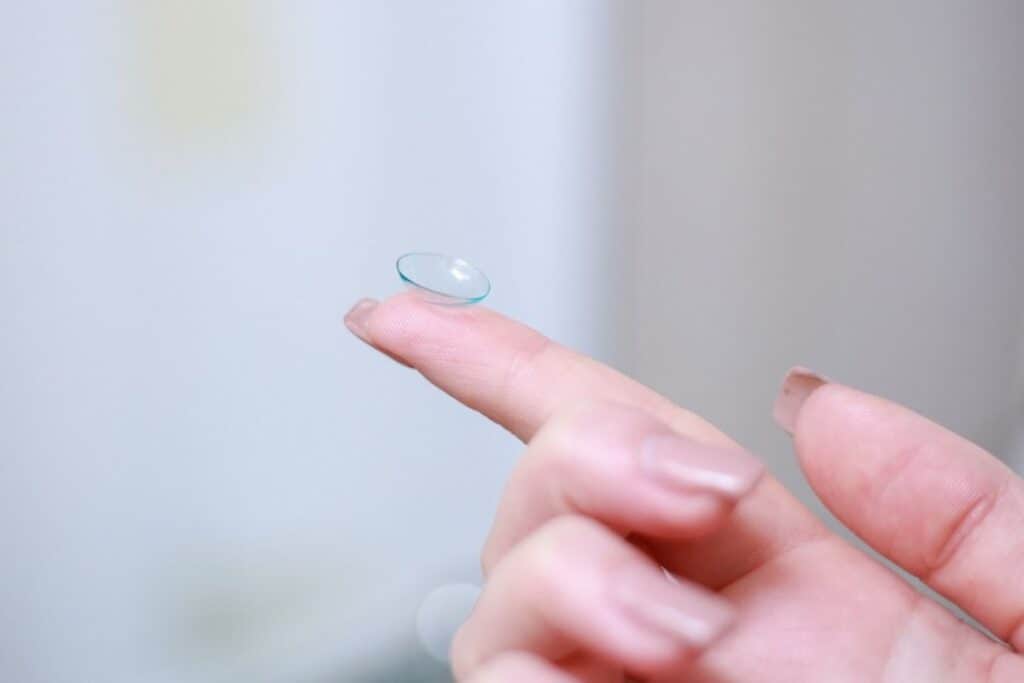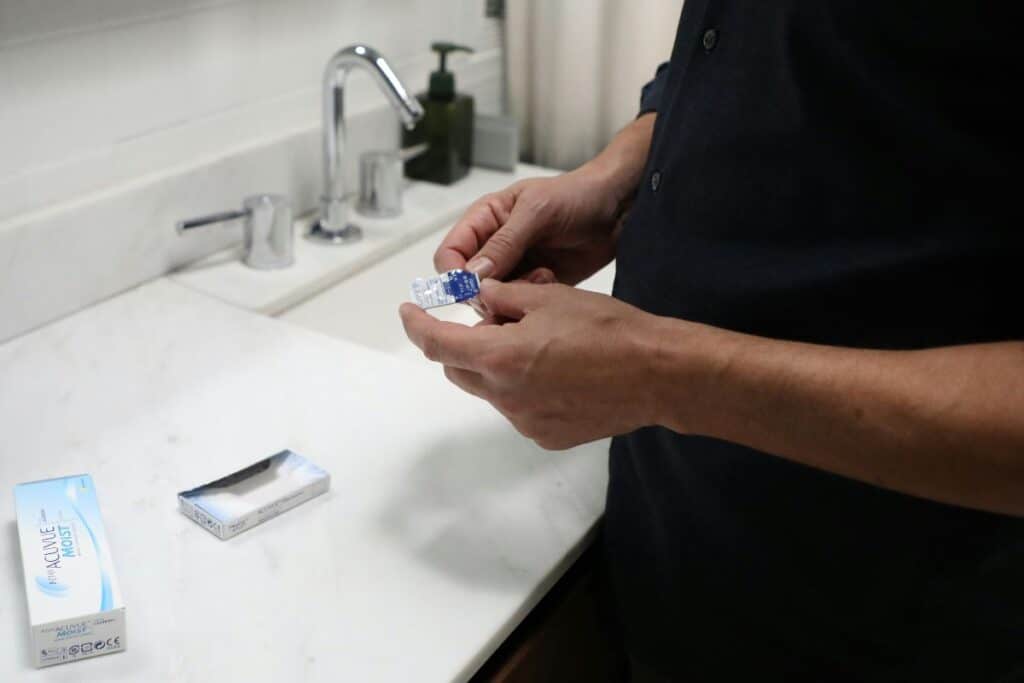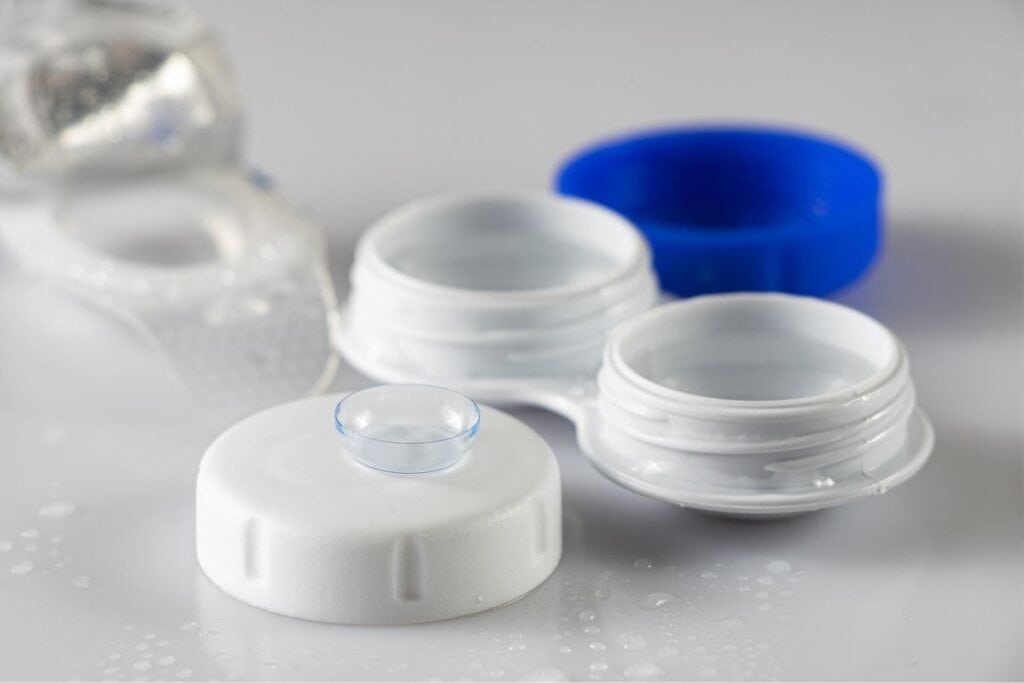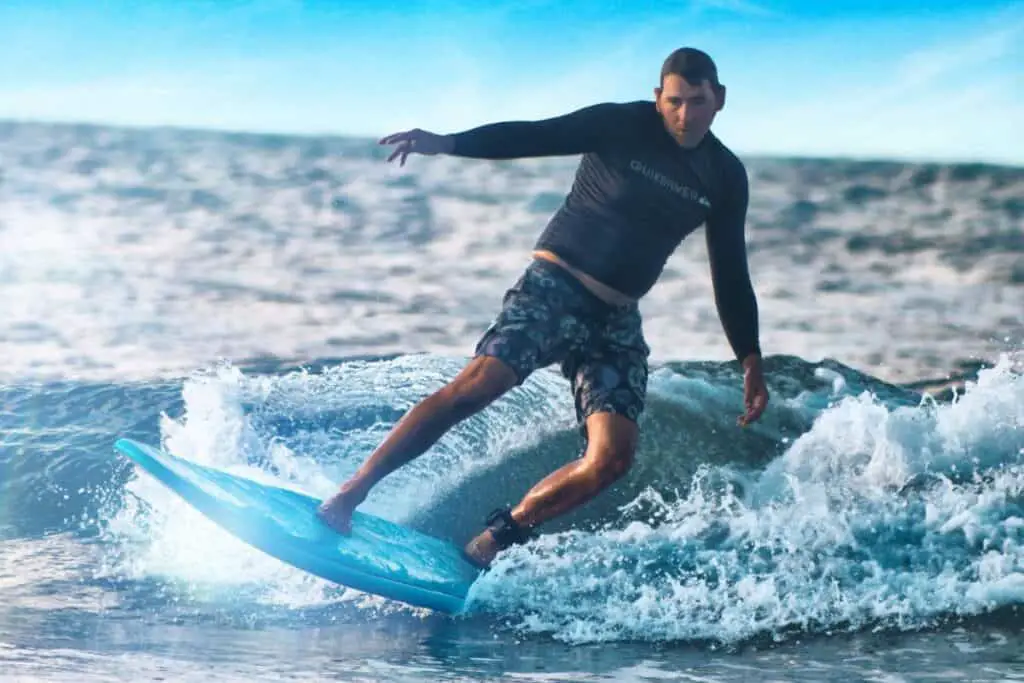Wearing contact lenses while surfing is not generally recommended due to the increased risk of eye infections. The ocean harbors bacteria and other contaminants that can adhere to the lenses, potentially leading to infections or other complications.
Despite the risks, I’ve found that many surfers like me are willing to weigh the benefits against the potential hazards. The drive for clear underwater vision sometimes leads us to wear contact lenses against advice.

For those choosing to wear lenses, I’ve learned that taking specific measures can mitigate these risks. Opting for disposable daily lenses can be a better choice since they’re discarded after each surf session, reducing the likelihood of contaminant buildup.
However, I must emphasize the importance of consulting with an eye care professional before deciding to surf with contact lenses. They can provide personalized advice and safety measures tailored to my vision needs. Staying informed and cautious ensures that I can continue to enjoy the sport while minimizing risks to my eye health.
Choosing the Right Contact Lenses for Surfing
When hitting the waves, I make sure that my vision stays clear without risking my eye health. Here’s how I choose the best contact lenses for surfing.

Lens Types and Surf Suitability
I carefully consider the type of contact lenses that can withstand the challenging marine environment. Soft lenses are favored because they’re more likely to stay in place.
However, rigid gas permeable (RGP) lenses, while offering sharper vision, are not ideal as they may dislodge easily with water contact.
- Soft Contact Lenses: Best for their ability to stay on the eye during rigorous activities.
- Rigid Gas Permeable Lenses: Not recommended for activities involving water due to the high risk of loss.
When to Use Disposable Lenses
Surfing with my contact lenses means I must minimize the risk of eye infections, and disposables are my best bet.
I use daily disposable lenses because they can be discarded after a single use, reducing the chance of bacteria build-up from ocean water exposure.
- Daily Disposables: Use a fresh pair before surfing and dispose of them right after.
- Extended Wear Disposables: Not advisable as they accumulate contaminants that can lead to infection.
By sticking to disposable lenses and understanding which types work best, I ensure my surfing sessions are safe for my eyes.
Understanding the Risks of Surfing with Contact Lenses
When I surf with contact lenses, I’m aware that I’m exposing my eyes to higher risks of infections and complications associated with saltwater and microorganisms.
Eye Infections and Complications
My primary concern with wearing contact lenses while surfing is the significant risk of eye infections.
Ocean water is a natural habitat for a variety of microorganisms, including bacteria, that can adhere to my contacts, increasing the risk of an infection. Infections can range from mildly irritating to severe, potentially leading to long-term eye damage.
Additionally, should my lenses become dislodged and lost in the water, not only is it inconvenient and costly, but it could also cause corneal abrasions as I try to navigate without proper vision.

Dealing with Saltwater and Microorganisms
As I surf, my contact lenses are directly exposed to saltwater, which can lead to irritation and redness due to the abrasive nature of sand particles and salt.
This irritation can be compounded by polluted water, which often contains higher levels of harmful microorganisms.
To mitigate these risks, if I choose to wear contacts, I use daily disposable lenses and ensure I have tight-fitting goggles to create a barrier against these external elements.
However, these precautions do not completely eliminate the risk, and I remain cautious of potential eye complications from exposure to these irritants.
Protective Measures for Surfers with Contact Lenses
When surfing with contact lenses, prioritizing eye protection from UV rays and preventing irritation from sand and debris is crucial. I’ll discuss the significance of these protective practices.
The Importance of UV Protection
My eyes, like yours, are susceptible to the sun’s ultraviolet (UV) rays, which can cause corneal damage over time.
When I hit the waves, I ensure that I’m wearing contact lenses with built-in UV protection to mitigate the risk.
However, such lenses do not cover the whole eye area, so I always pair them with UV-blocking surf sunglasses or prescription goggles.
This combination provides comprehensive protection against harmful rays.
- UV-blocking contact lenses: Crucial for cornea protection
- Surf sunglasses/prescription goggles: Shield eyes from direct and reflected UV light
Sand and Debris Precautions
No one enjoys the painful sensation of sand or debris in their eyes, and as a surfer, I’m constantly exposed to these elements.
To prevent these annoyances and potential eye infections, I wear tight-fitting goggles when I surf.
These goggles not only keep my contact lenses securely in place but also act as a barrier against sand, salty water, and other irritants that might be tossed up by the waves.
- Tight-fitting goggles: Essential for keeping lenses in place and blocking out sand
- Regular saline rinses: I use them post-surfing to flush out any small particles
In addition to these measures, I make it a habit to apply sunscreen to my face, avoiding the eye area, to protect my skin while focusing on eye safety components like goggles for comprehensive facial protection.
Maximizing Visual Clarity and Eye Safety

In my experience as a surfer, ensuring clear vision while maintaining eye safety is crucial. I’ll discuss the importance of vision correction and methods to mitigate vision loss for surfers.
Vision Correction and Surfing
For surfers with vision impairments like myopia or astigmatism, achieving clear vision on the water can be challenging.
Glasses are often impractical due to the risk of losing them in the water, and they can experience issues like fogging and reflections.
Instead, I consider contact lenses as a viable solution, provided that they are paired with tight-fitting surfing sunglasses or goggles to protect against UV rays and waterborne irritants.
- Daily disposable lenses: Ideal for single use to minimize the risk of eye infections.
- Surfing sunglasses: Must have a secure strap and offer UV protection.
- Goggles: An alternative to provide a seal against water entry.
By choosing the correct type of contact lenses and shielding my eyes from the elements, I ensure that my peripheral vision remains unobstructed, which is essential for safety when surfing.
Preventing Vision Loss
Guarding against vision loss while surfing involves more than correcting refractive errors; it’s about shielding the eyes from the harsh marine environment.
Saline water and sand can cause irritation, and prolonged exposure to sunlight may exacerbate the risk of conditions leading to vision loss.
Protection
| Method | Description |
| Tight-fitting goggles | Prevents water contact which can carry pathogens leading to eye infections |
| UV-blocking lenses | Crucial for protecting against harmful UV rays which can damage the eye |
Hygiene
- Remove lenses immediately: After surfing, I always remove my lenses to prevent any buildup of microorganisms.
- Regular check-ups: Routine visits to the eye care professional help me catch and address any signs of potential eye health issues early.
Staying informed about the risks and taking these precautions helps me protect my eyes while enjoying the waves with the best possible vision.
Tips for Contact Lens Maintenance in a Surfing Environment
When I surf with contact lenses, maintaining proper hygiene and lens care is crucial to avoid eye infections or corneal abrasions.
Here are specific practices I follow to keep my lenses clean and my eyes safe in a surfing environment.
Cleaning and Storage Practices
Before Surfing:
- I always wash my hands with soap and water before handling my contact lenses to minimize the transfer of bacteria and contaminants.
- I store my lenses in a clean case filled with fresh sterile saline solution to ensure they remain uncontaminated.
After Surfing:
- Upon returning from the surf, I make sure to clean my lenses using a multi-purpose solution, rubbing them gently with my fingers to remove any potential buildup of microorganisms.
- I replace the saline solution in the case every time I store my lenses, never reusing or topping off old solution.
Handling Contacts Pre and Post Surf
Pre-Surf Handling:
- I take care not to touch the tip of the saline solution bottle to any surface to avoid contamination.
- Before heading into the water, I ensure my lenses are seated correctly in my eyes to reduce the chance of loss.
Post-Surf Handling:
- After surfing, I carefully remove my lenses, again with clean hands, and inspect them for any damage or unusual residue.
- In case I feel any discomfort or the urge to rub my eyes, I practice restraint because this can cause more harm and potentially scratch the cornea.
Daily Lens Care Routine:
| Step | Description |
|---|---|
| 1 | Wash and dry hands thoroughly. |
| 2 | Place lenses in palm and apply multi-purpose solution. |
| 3 | Gently rub each side of the lens for a few seconds. |
| 4 | Rinse lenses with solution to remove debris. |
| 5 | Store in a clean case with fresh sterile saline solution. |
| 6 | Ensure case has adequate drainage to prevent moisture accumulation. |
By following these detailed practices, I can help guarantee my vision remains clear and my eyes stay healthy, even when I’m chasing waves.
Frequently Asked Questions

In this section, I’ll address common inquiries about surfing with vision correction, focusing on safety and performance for surfers.
How do professional surfers manage poor vision while competing?
Professional surfers with vision impairment often use prescription surf goggles or contact lenses with protective eyewear. I’ve observed that they typically consult with ophthalmologists to find the safest and most effective solution for clear vision while surfing.
Are prescription surf goggles a better alternative to contact lenses for surfing?
Yes, prescription surf goggles offer a safer alternative as they protect against irritants and reduce the risk of eye infections. They are specifically designed to withstand the ocean’s conditions while providing the necessary vision correction.
Is it safe to wear contact lenses while surfing?
Wearing contact lenses while surfing is not without risk. Saltwater and contaminants can lead to eye infections; however, I’m aware that some surfers choose to wear daily disposable lenses and take them out immediately after surfing to mitigate these risks.
Do surf goggles provide sufficient protection for those with prescription eyewear needs?
Surf goggles are designed to provide comprehensive protection. They shield eyes not just from water, but also from UV rays and impact, making them a suitable option for those requiring prescription eyewear while surfing.
What are the risks of swimming in the ocean while wearing contact lenses?
The primary risks include eye infections and irritation due to saltwater, sand, and potential pollutants in ocean water. I consider avoiding contact lenses in such environments, as recommended by eye care professionals, to be a prudent choice.
How do transitional or tinted contact lenses perform in a surfing environment?
Transitional or tinted contact lenses can offer visual comfort by adjusting to varying light conditions, but they might not prevent the risks associated with contact lens wear in water. It’s essential to consider the potential for compromised eye health when deciding on their use for surfing.
